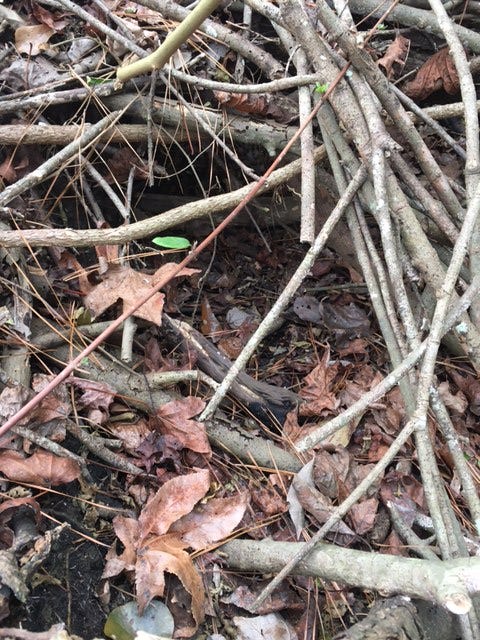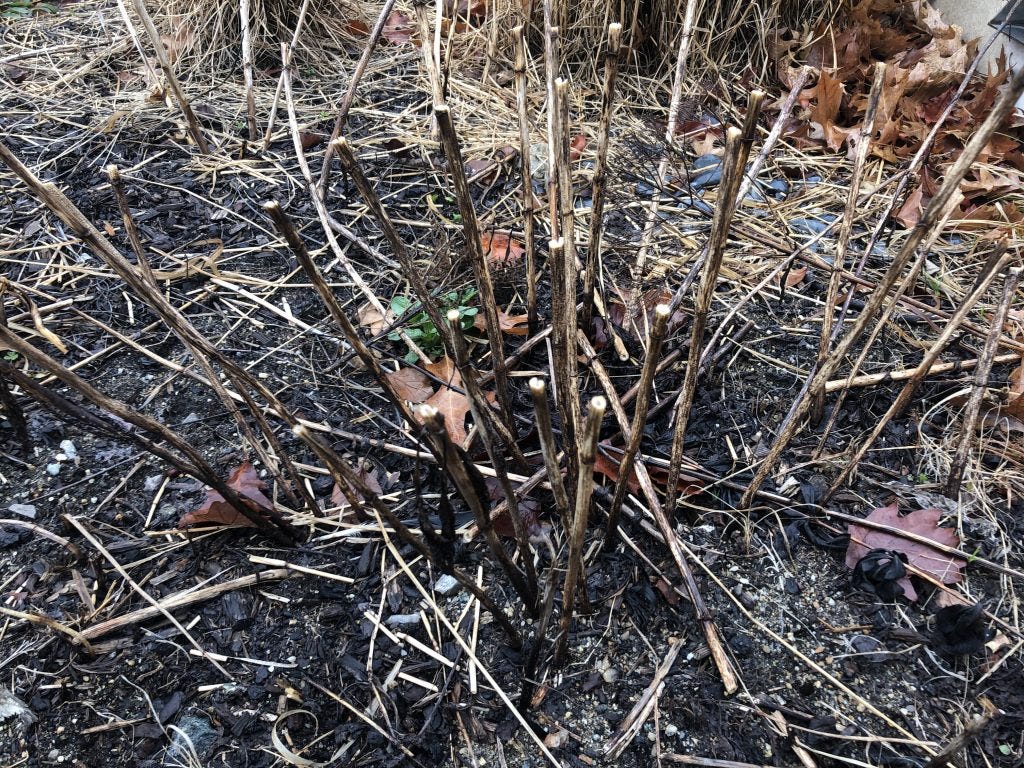Who's Snoozing In Your Backyard?
For the colder months, leave leaf litter, leftover stems and stalks, woodpiles and brush in your yard. Your local winged, creeping, crawling, hopping, or walking guests will welcome your hospitality.

That's terrific advice, and hopefully, we’ll all heed those words of wisdom.
As the foliage begins to wither away, you’ll notice fewer of your winged friends greeting you each morning, making you question if any of them are sticking around for the winter.
If you had a pollinator garden, the chances are excellent that the insects you watched buzzing and flittering around your shrubs, wildflowers, and trees are still present. The bees, butterflies, moths, wasps, and beetles didn't go anywhere. Instead, they just decided it was time to bed down for the colder months. These homebodies have picked a nice warm spot for their winter nap.
As you spend the short days inside your home, it's nice to gaze out the window and imagine who's sleeping under the snow-covered woodpile, what kinds of insects have burrowed underground, or who's nestled in the leaves. You may even what other creatures aside from insects are benefiting from the cover.

The Busy Bugs
Seventy percent of native bees nest in underground burrows or inside dead plant stems. Ensure there is ample access to the bare ground for the burrowing bees and dead wood, hollow stems, or brush piles for the other native bees like the mason, carpenter, and leafcutter bees.
At the onset of winter, the younger Bumblebee queens desert their original queen and nest-mates to their own fates during the oncoming cold weather. New queens comfortably hibernate beneath soil and leaf litter until early spring, when they awaken to begin the task of building brand-new colonies from scratch.
Some moths, wasps, and spiders share the same taste as bees and like plant stems, bare ground, and fallen leaves. They find the vegetation and grasses a safe place to store their eggs over winter. Even the old growth from your garden serves as a home for some overwintering insects. Hollow flower stems are a favorite nesting spot. So, please leave at least some of the flower stems and dead vegetation until next spring.
Butterflies, wasps, moths, fireflies, ladybugs, and ground beetles seek shelter from predators and the elements in the leaf litter and brush piles. The butterflies and moths use it to protect their eggs, caterpillars, chrysalises, and themselves from the cold. In addition to the pollinators, snails, worms, millipedes, and other bugs and spiders also snuggle down for a long winter's nap.
Dead standing trees (snags) provide habitat for an extensive array of birds, bees, and other insects. Decaying logs offer homes to a wide variety of creatures, both large and small. Some beetles prefer the wet underside, while butterflies and moths like the drier nooks and crannies. Songbirds and small mammals take advantage of the brush to make safe, secure dens or nests.
I'll bet you never realized there was so much going on around you! It's a win-win for all the critters living in your backyard over the winter months. Except for the bugs that feed the more giant creatures, everyone lives happily ever after despite the cold.
Watch Out For Nesting Bugs
Are you concerned about disturbing your guests when you do the work that needs to be completed in spring? There's no reason not to take care of the pruning and cleaning up around the garden. Just take the time to check out the area before you start renovating.
If you plan to have a winter garden or move plants around, be careful not to disturb the nesting bees. Look for holes in the ground or other signs of activity before digging, and try to keep your holes less than six inches in depth.
Before you cut down any woody-stemmed plants, check for nesting bees. Leafcutter and mason bees "cap off" the stems they are using, but carpenter bees are not so obvious. If you see that some of the stems are still occupied, leave them where they are. The new growth of flowers will cover up the old stems.
Also, look under rocks and logs before moving them. If possible, wait until spring to shift brushpiles or rearrange the stones surrounding the garden – just in case.
It's surprising how much hidden activity goes on during the winter. Most people have no idea so many creatures share the same territory with them. Now you know the true story. Your barren-looking yard is literally filled with life, anxiously waiting until spring to emerge.
And you have the perfect front-row seat to watch the show. Enjoy!
~~~~~~~~~~~~~~~~~~~~~~~~~~~~~~~~~~~~~~~~~~~~
Dear Reader,
I'd be ever so grateful if you would take a few minutes to recommend Let's Get Our Hands Dirty to your followers on Substack and other social media platforms.
Thank you!
Greta
---------------------------
Let's Get Our Hands Dirty is a reader-supported publication. This post is free as are all my posts. Please subscribe so you can receive notification when new articles are published. I'd love for you to become a part of our nature-loving family. Basic subscriptions are free, but if you sign up for a paid subscription as a love offering, that would be wonderful and greatly appreciated!
Have a fabulous day,
Greta
Please use the buttons below to Like, Comment, Restack, and Share my post on Substack and other social media platforms.
THANK YOU SO MUCH!








A lovely and solacing meditation, which takes my mind to a wider place. Thanks.
Thanks so much, this wonderful tip was taught to me by a grandmother. I wish our education system would allow folks to come to classrooms and share this kind of knowledge with future generations. So many younger people have no connection with agricultural or people in their lives who tend the earth. It’s no surprise that there is such a lack of compassion for planet care among the population. Thanks again - enjoy another day outside in the wonderful, magical, mystical place I call the garden of life!;